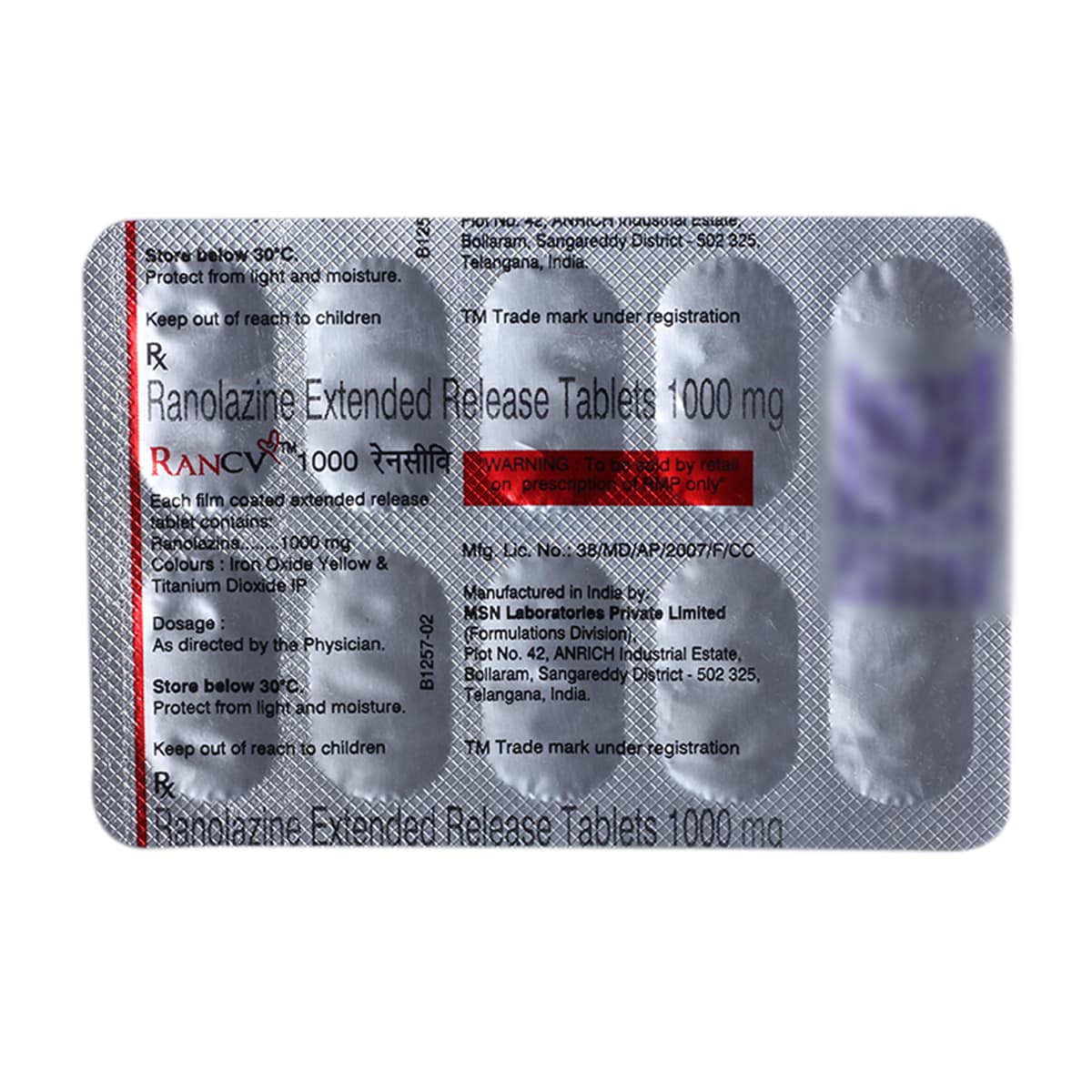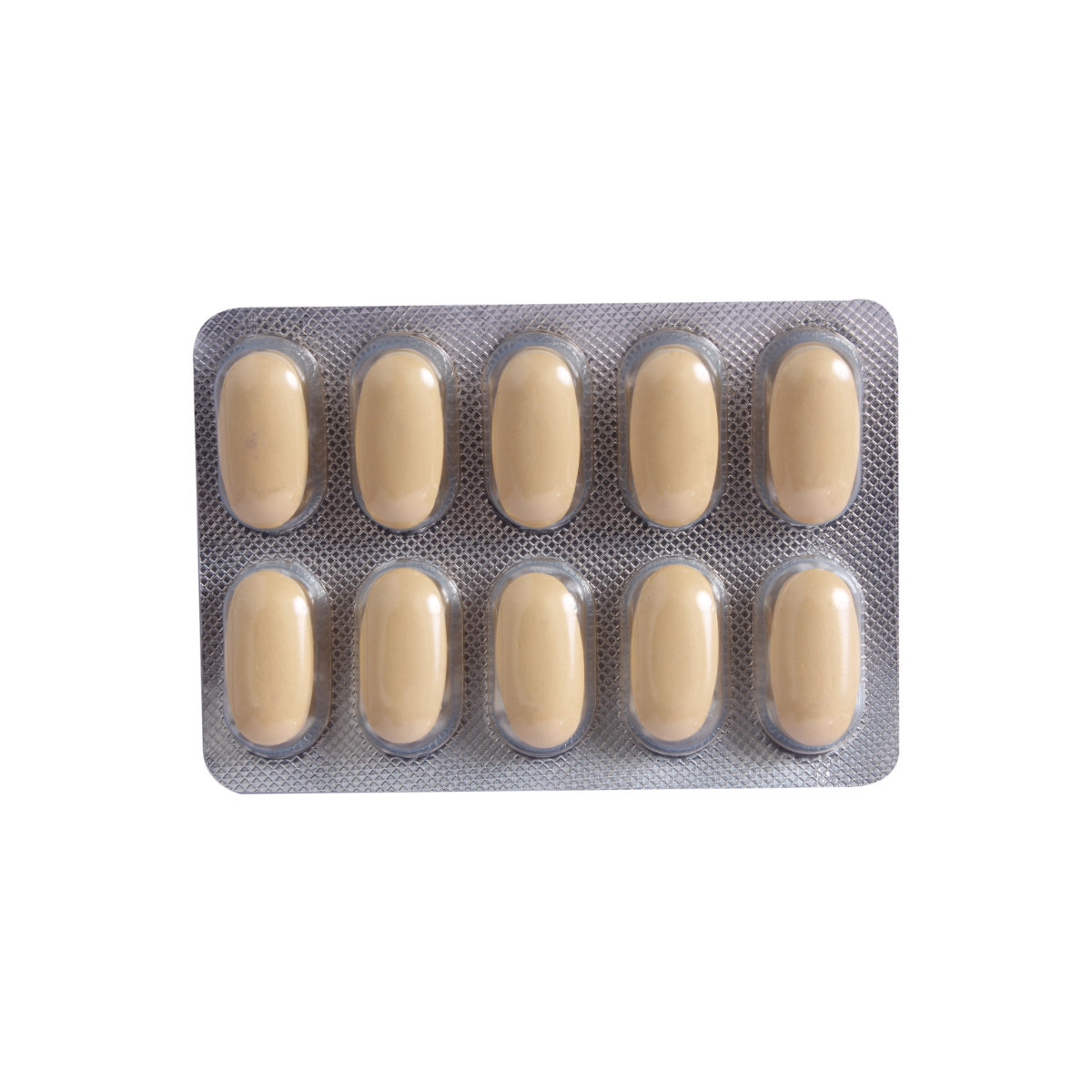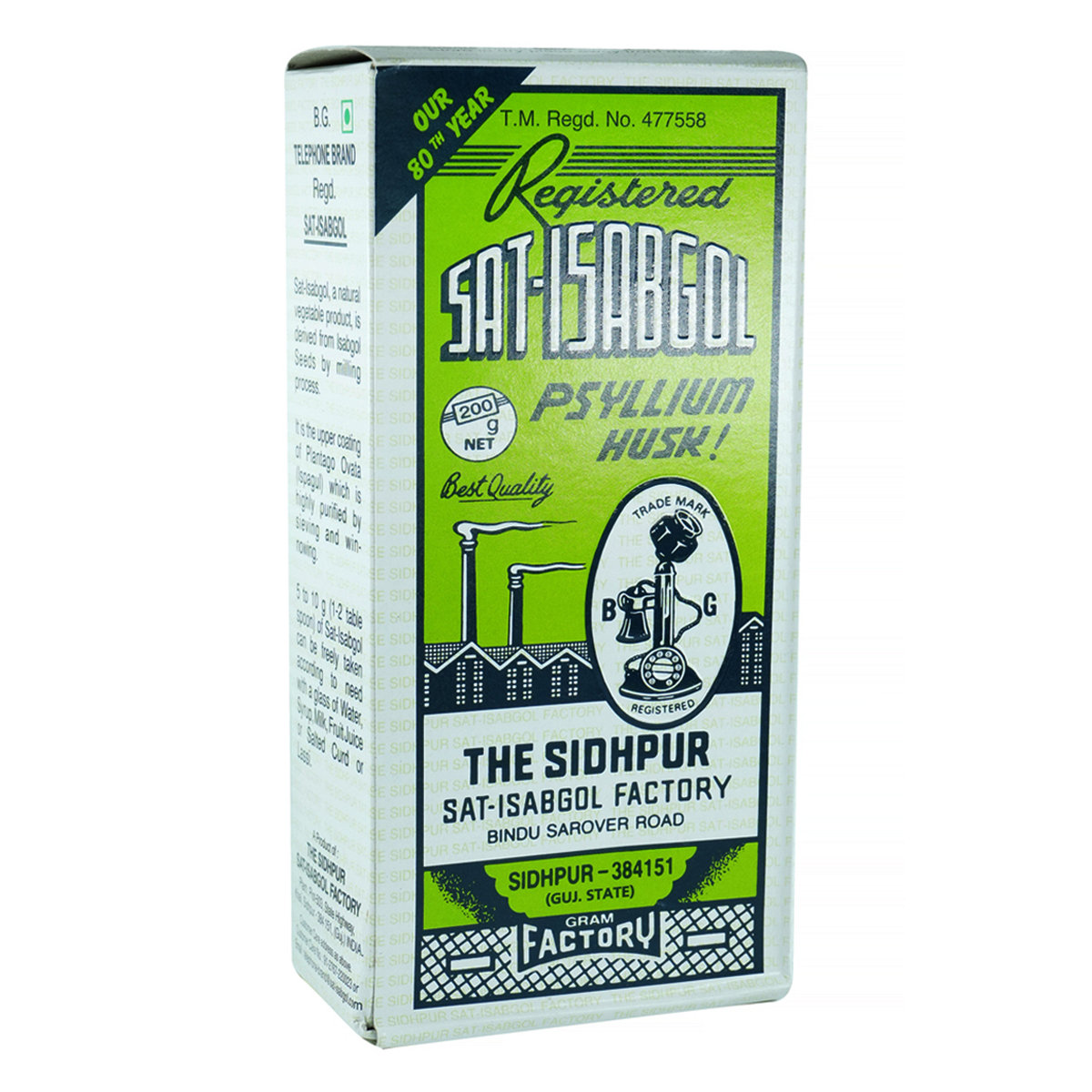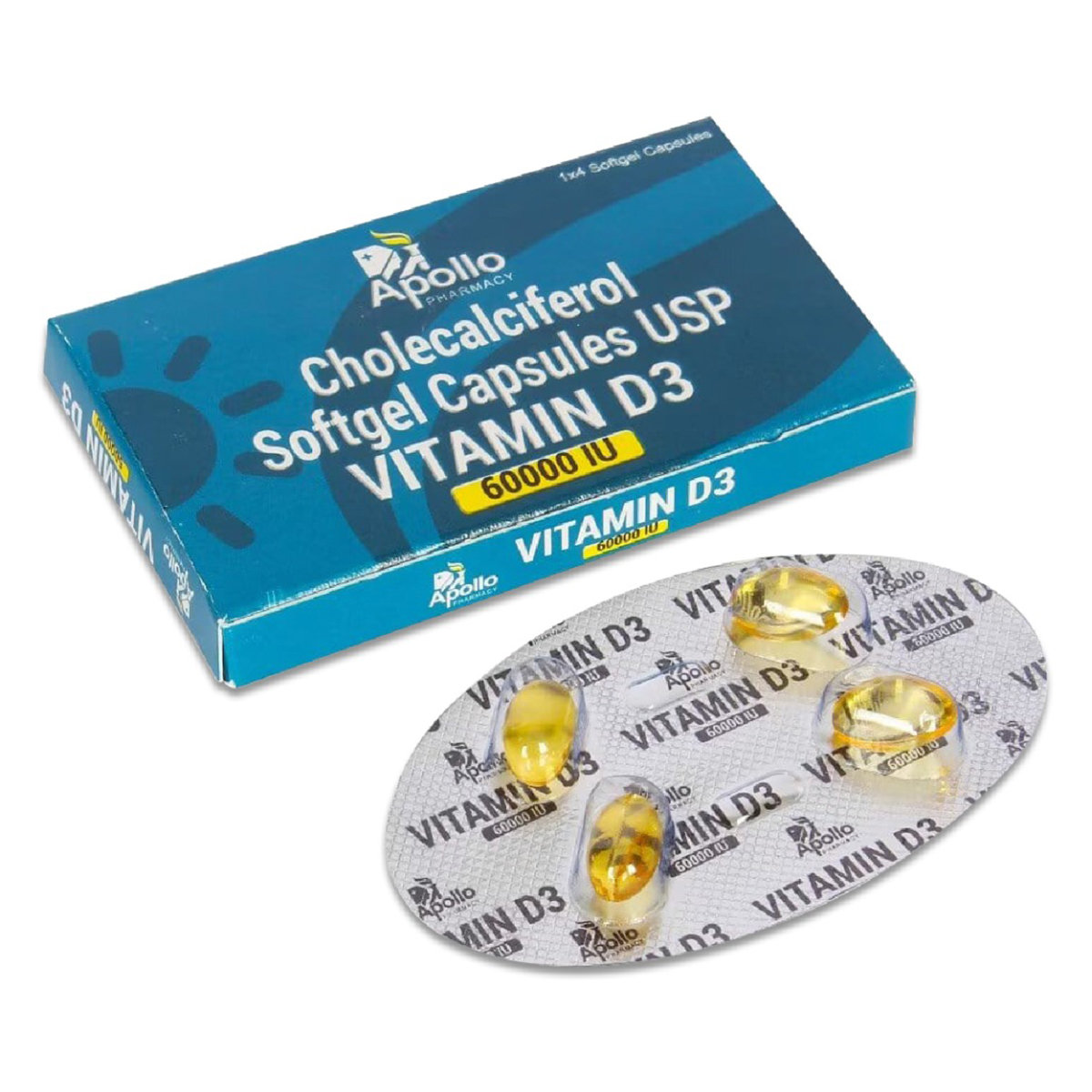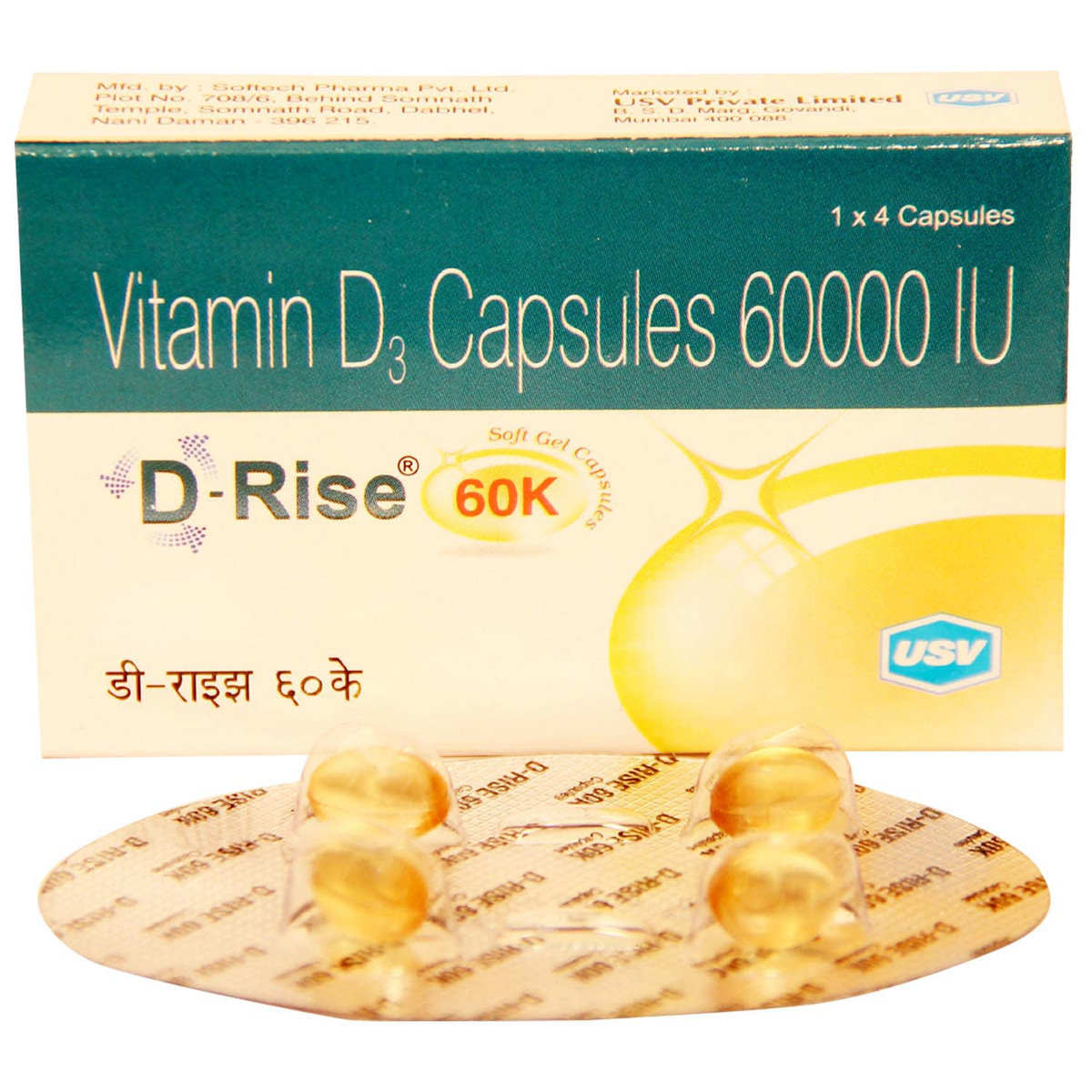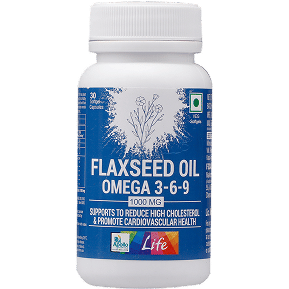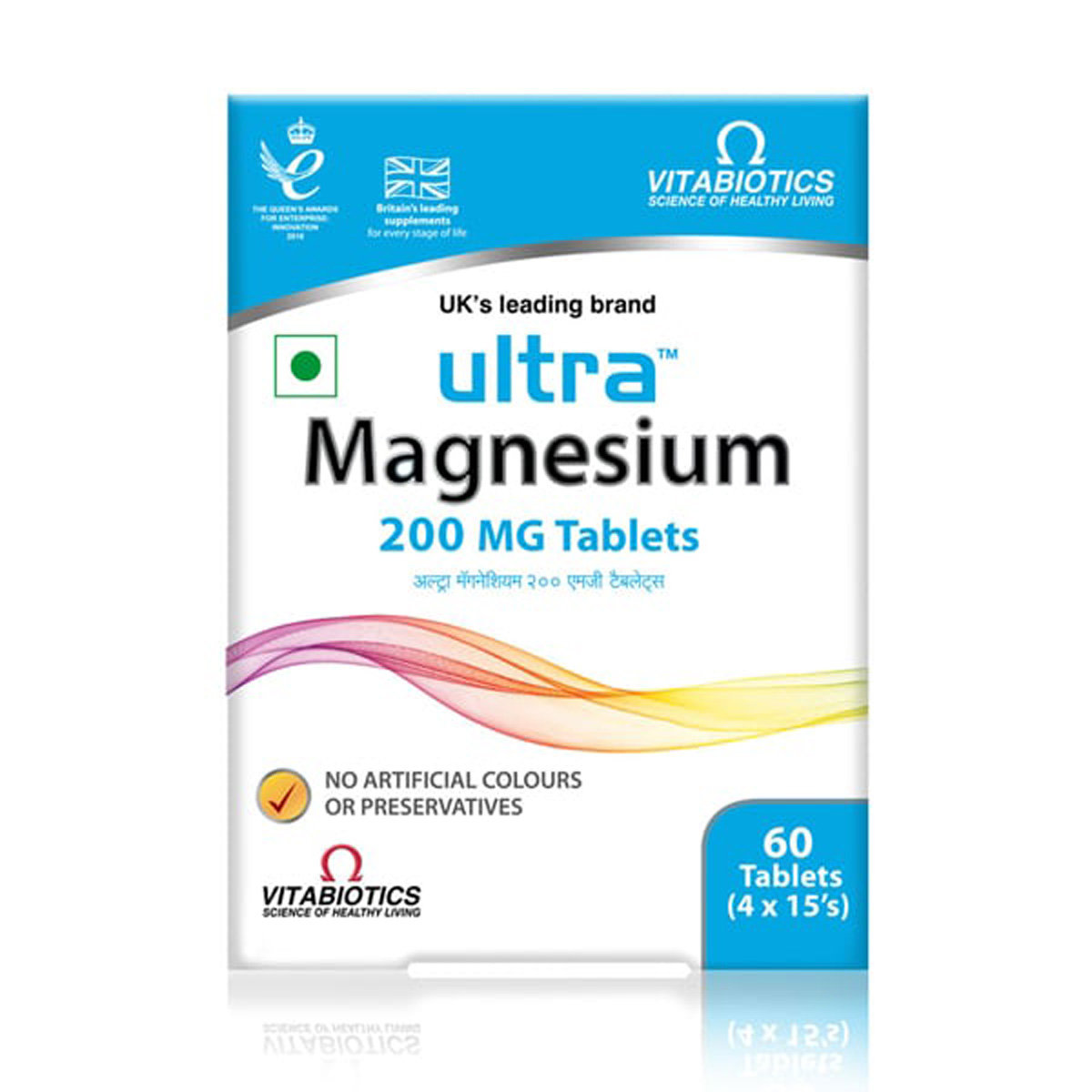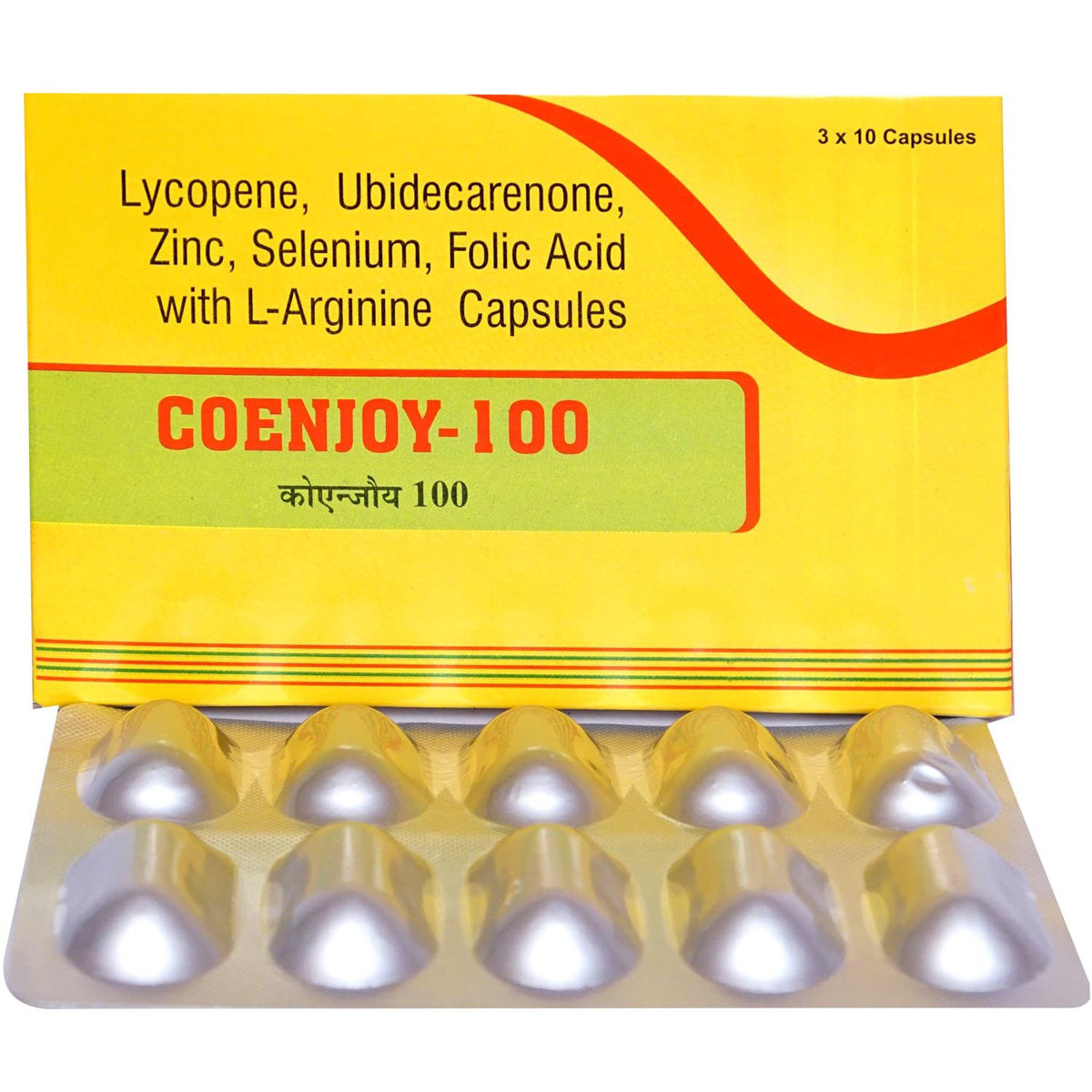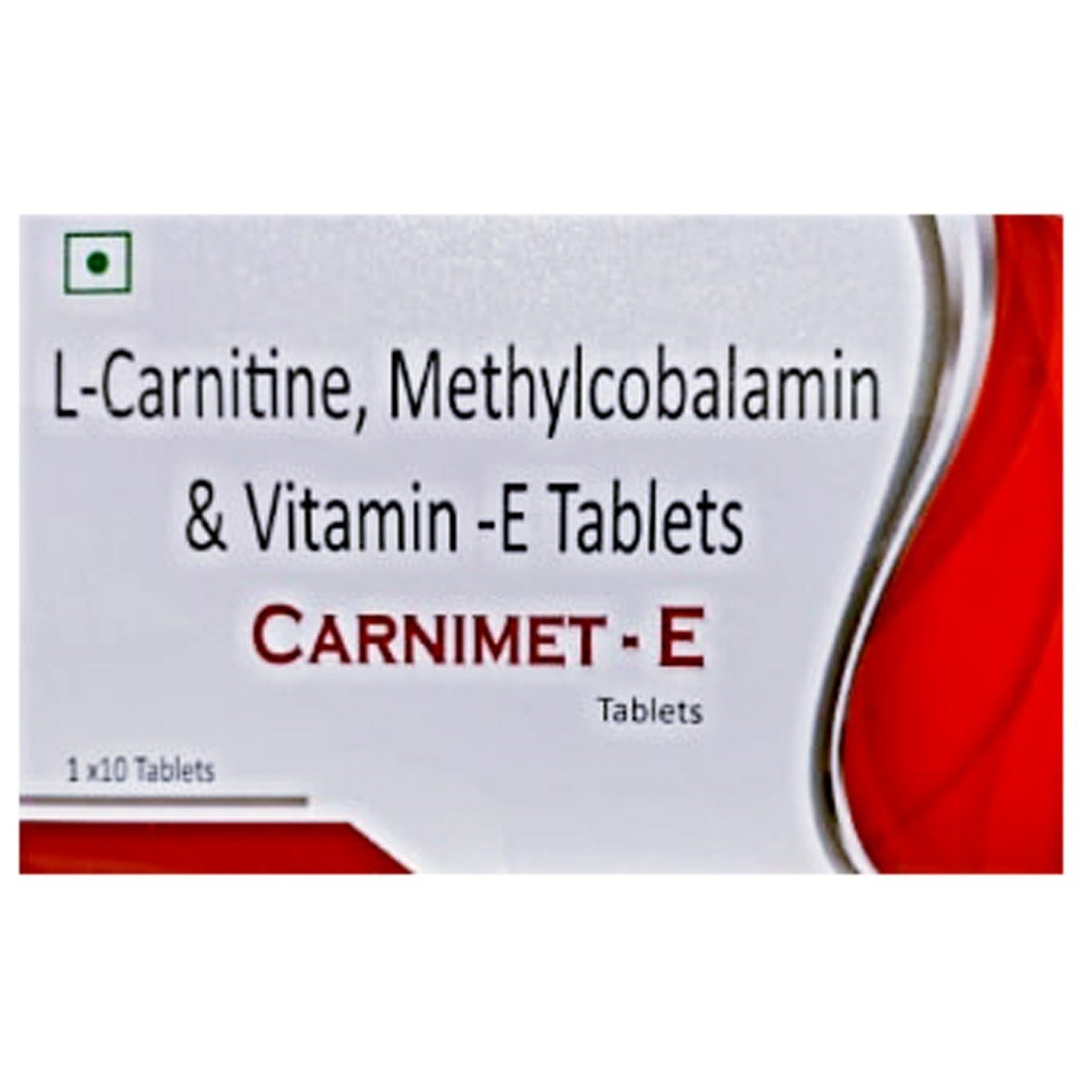Ranolaz OD Tablet
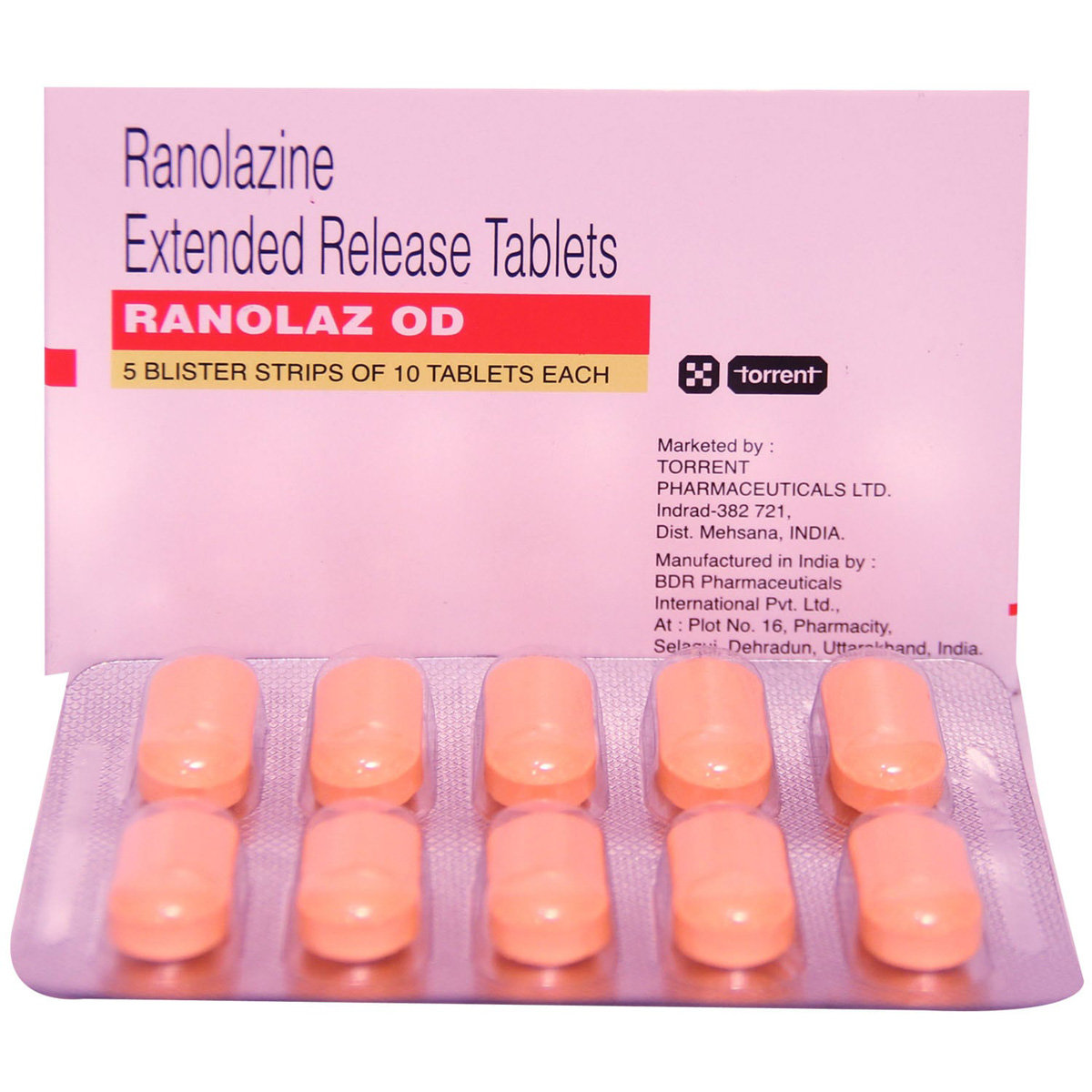
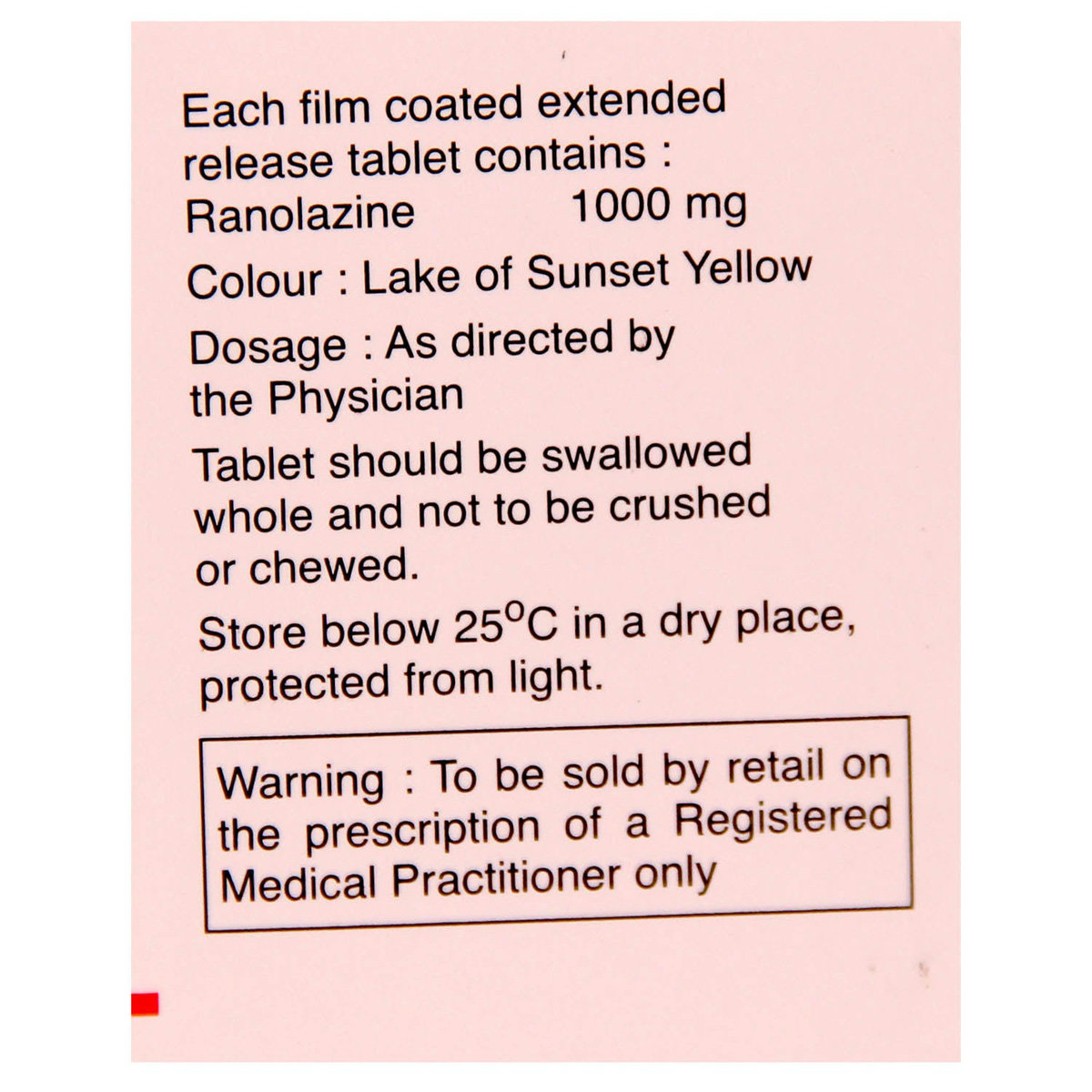
MRP ₹280
(Inclusive of all Taxes)
₹42.0 Cashback (15%)
know your delivery time
Provide Delivery Location
Composition :
Manufacturer/Marketer :
Consume Type :
Expires on or after :
Return Policy :

Secure Payment

Trusted by 8 Crore Indians

Genuine Products
Therapeutic Class
Country of origin
Manufacturer/Marketer address
Disclaimer
Alcohol
Safe if prescribed
Ranolaz OD Tablet does not have any reported interaction; hence, if you experience any difficulty, discuss with your doctor.
Pregnancy
Consult your doctor
Ranolaz OD Tablet should not be used when pregnancy unless necessary. So, inform your doctor if you are pregnant or suspect pregnancy. Your doctor will weigh the benefits and potential risks before prescribing Ranolaz OD Tablet .
Breast Feeding
Consult your doctor
Ranolaz OD Tablet should not be used in nursing mothers. Please consult the doctor if you have any concerns regarding this.
Driving
Safe if prescribed
Ranolaz OD Tablet does not have any reported interaction; hence, in case you experience any difficulty, discuss with your doctor.
Liver
Consult your doctor
Ranolaz OD Tablet to be taken with caution, especially if you have a history of liver diseases/conditions. The dose may have to be adjusted by your doctor.
Kidney
Consult your doctor
Ranolaz OD Tablet to be taken with caution, especially if you have a history of kidney diseases/conditions. The dose may have to be adjusted by your doctor.
Children
Safe if prescribed
Ranolaz OD Tablet is not recommended for children below the age of 18. The safety and effectiveness of Ranolaz OD Tablet have not been established in children due to limited testing of this drug on children by competent authorities worldwide.
Product Substitutes
About Ranolaz OD Tablet
Ranolaz OD Tablet belongs to the class of anti-anginal medications. It is used alone or with other medicines to treat angina pectoris. Angina pectoris is discomfort in the chest or chest pain, which generally occurs due to coronary artery disease (CAD) when an adequate amount of oxygen and blood is not reaching the heart and its muscles. It can also be due to the blockage of the heart's arteries. It helps prevent any further attack of angina by making the heart work more efficiently, and it is used as an add-on to existing treatment in patients whose disease is not adequately controlled by other medicines for angina pectoris, such as beta-blockers or calcium antagonists, or in patients who cannot take these medicines.
The active substance in Ranolaz OD Tablet is Ranolazine, which reduces sodium ions flow into the heart muscle cells. This interferes with the activity of special channels on the cell surface called 'sodium-dependent calcium channels through which calcium ions normally enter the cells. This reduces the number of calcium ions that enter the cells. Calcium ions normally cause the heart muscle to contract. By reducing the flow of calcium into the cells, Ranolaz OD Tablet is thought to help the heart to relax, improving blood flow to the heart muscle and relieving the symptoms of angina pectoris.
Your doctor will tell you how to take the Ranolaz OD Tablet based on your medical condition. You may sometimes experience constipation, dizziness, headache, or feeling sick. Most of these side effects of Ranolaz OD Tablet do not require medical attention and gradually resolve over time. However, if the side effects are persistent, reach out to your doctor.
Do not consume Ranolaz OD Tablet if you are allergic to any component in this medicine. Ranolaz OD Tablet should not be stopped even if you feel better for the best results as it prevents any future harm. If you stop taking the Ranolaz OD Tablet on your own, your chest pain can come back in more severe form. If you plan to get pregnant or are pregnant or breastfeeding, please consult your doctor to avoid any unwanted harm to the baby. Some lifestyle modifications are important for best results when taking Ranolaz OD Tablet like smoking cessation, decreasing alcohol intake, eating well, regular exercise, and managing stress. Ranolaz OD Tablet should be taken with caution if you have any liver or kidney problems. Also, inform your doctor if you are taking other medications to avoid unwanted side effects or contraindications.
Uses of Ranolaz OD Tablet
Medicinal Benefits Mweb
Key Benefits
Ranolaz OD Tablet is prescribed for treating angina. Ranolaz OD Tablet is an anti-anginal medication used to treat angina pectoris. It reduces sodium ions' flow into the heart muscle cells. This interferes with the activity of special channels on the cell surface called ‘sodium-dependent calcium channels’ through which calcium ions normally enter the cells. This reduces the number of calcium ions that enter the cells. Calcium ions normally cause the heart muscle to contract. By reducing the flow of calcium into the cells, Ranolaz OD Tablet is thought to help the heart to relax, improving blood flow to the heart muscle and relieving the symptoms of angina pectoris.
Directions for Use
Side Effects of Ranolaz OD Tablet
- Constipation
- Dizziness
- Headache
- Feeling sick
Drug Warnings
Ranolaz OD Tablet should be taken with caution in liver/kidney disease, are pregnant, plan to become pregnant, or are breastfeeding, history of heart disease. Also, grapefruit juice should be avoided while taking Ranolaz OD Tablet . As a precautionary measure, junk food items from outside and stick to freshly prepared home-cooked meals for a speedy recovery. Do regular exercise to avoid the feeling of heaviness in the abdomen.
Drug-Drug Interactions
Drug-Drug Interactions
Login/Sign Up
When Ranolaz OD Tablet is taken with Saquinavir, may significantly increase the blood levels and effects of Ranolaz OD Tablet.
How to manage the interaction:
Taking Ranolaz OD Tablet with Saquinavir together can possibly result in an interaction, but it can be taken if a doctor has advised it. Do not discontinue any medications without consulting a doctor.
Co-administration of Ranolaz OD Tablet with Cisapride can increase the risk of irregular heart rhythm.
How to manage the interaction:
Taking Ranolaz OD Tablet with Ceritinib together can possibly result in an interaction, but it can be taken if a doctor has advised it. However, contact a doctor immediately if you experience any symptoms such as dizziness, lightheadedness, fainting, shortness of breath, or heart palpitations. Do not discontinue any medications without consulting a doctor.
When Ceritinib is taken with Ranolaz OD Tablet, may significantly increase the blood levels and effects of Ranolaz OD Tablet.
How to manage the interaction:
Taking Ranolaz OD Tablet with Ceritinib together can possibly result in an interaction, but it can be taken if a doctor has advised it. In case you experience any side effects like lightheadedness, fainting, dizziness, or fast or pounding heartbeats, consult a doctor. Do not discontinue any medications without consulting a doctor.
When Thioridazine is taken with Ranolaz OD Tablet, may significantly increase the risk of irregular heart rhythm.
How to manage the interaction:
Taking Ranolaz OD Tablet with Thioridazine together can possibly result in an interaction, but it can be taken if a doctor has advised it. However, contact a doctor immediately if you experience any symptoms such as dizziness, lightheadedness, fainting, shortness of breath, or heart palpitations. Do not discontinue any medications without consulting a doctor.
Taking Enzalutamide may decrease the blood levels of Ranolaz OD Tablet, which may make Ranolaz OD Tablet less effective.
How to manage the interaction:
Taking Enzalutamide with Ranolaz OD Tablet is not recommended, as it may lead to an interaction, it can be taken if prescribed by the doctor. Do not discontinue any medications without a doctor's advice.
Co-administration of Ranolaz OD Tablet together with Voriconazole may significantly increase the blood levels and effects of Ranolaz OD Tablet.
How to manage the interaction:
Taking Ranolaz OD Tablet with Voriconazole together can result in an interaction, but it can be taken if a doctor has advised it. Consult a doctor if you experience dizziness, or fast or pounding heartbeats. Do not discontinue any medications without consulting a doctor.
Co-administration of Delavirdine and Ranolaz OD Tablet may significantly increase the risk of irregular heart rhythm.
How to manage the interaction:
Taking Delavirdine with Ranolaz OD Tablet can lead to an interaction, please consult a doctor before taking it. They can be taken together if advised by a doctor. However, contact a doctor if you experience any symptoms such as sudden dizziness, lightheadedness, fainting, or fast or pounding heartbeats. Do not stop taking any medications without consulting a doctor.
Using Ranolaz OD Tablet together with phenytoin may significantly reduce the blood levels of Ranolaz OD Tablet leading to dreceased effectiveness of Ranolaz OD Tablet in treating your condition.
How to manage the interaction:
Taking Phenytoin with Ranolaz OD Tablet is not recommended. They can be taken together if advised by a doctor. However, contact a doctor if you experience any symptoms. Do not stop taking any medications without consulting a doctor.
Co-administration of Phenylbutazone and Ranolaz OD Tablet may significantly reduce the blood levels of Ranolaz OD Tablet, which may make the medication ineffective or less effective.
How to manage the interaction:
Taking Phenylbutazone with Ranolaz OD Tablet can lead to an interaction, please consult a doctor before taking it. They can be taken together if advised by a doctor. However, contact a doctor if you experience any symptoms. Do not stop taking any medications without consulting a doctor.
Co-administration of Grepafloxacin and Ranolaz OD Tablet may significantly increase the risk of irregular heart rhythm.
How to manage the interaction:
Taking Grepafloxacin with Ranolaz OD Tablet can lead to an interaction, please consult a doctor before taking it. They can be taken together if advised by a doctor. However, contact a doctor if you experience any symptoms such as sudden dizziness, lightheadedness, fainting, or fast or pounding heartbeats. Do not stop taking any medications without consulting a doctor.
Drug-Food Interactions
Drug-Food Interactions
Login/Sign Up
Grapefruit Juice, Grapefruit
How to manage the interaction:
Grapefruit juice can increase the levels of Ranolaz OD Tablet, and high blood levels of food can occasionally cause an irregular heart rhythm that may be serious. Grapefruit and grapefruit juice should be avoided while taking Ranolaz OD Tablet if possible.
Drug-Diseases Interactions
Drug-Diseases Interactions
Login/Sign Up
Drug-Drug Interactions Checker List
- CLARITHROMYCIN
- QUINIDINE
- DOFETILIDE
- SOTALOL
- KETOCONAZOLE
- ITRACONAZOLE
Habit Forming
Diet & Lifestyle Advise
- Maintain a healthy lifestyle by exercising regularly, maintaining weight, and eating a healthy diet.
- If you suffer from kidney or liver disease, please inform your doctor before taking the Ranolaz OD Tablet .
- Alcohol consumption along with Ranolaz OD Tablet should be avoided as it may cause excessive drowsiness and increase muscle pain.
- As a precautionary measure, junk food items from outside and stick to freshly prepared home-cooked meals for a speedy recovery.
All Substitutes & Brand Comparisons
RX
Out of StockRevulant 1000 mg Tablet 10's
Sun Pharmaceutical Industries Ltd
₹115
(₹10.35 per unit)
58% CHEAPERRX
Out of StockRandear 1000mg Tablet ER
Alkem Laboratories Ltd
₹120
(₹10.8 per unit)
57% CHEAPERRX
Out of StockRanace-1000 Tablet 10's
Three Dots Life Science Pvt Ltd
₹150
(₹13.5 per unit)
46% CHEAPER

Have a query?
Buy best Cardiology products by
Torrent Pharmaceuticals Ltd
Sun Pharmaceutical Industries Ltd
Lupin Ltd
Intas Pharmaceuticals Ltd
Cipla Ltd
Micro Labs Ltd
Macleods Pharmaceuticals Ltd
Abbott India Ltd
Ajanta Pharma Ltd
Ipca Laboratories Ltd
Eris Life Sciences Ltd
Mankind Pharma Pvt Ltd
Lloyd Healthcare Pvt Ltd
Dr Reddy's Laboratories Ltd
Glenmark Pharmaceuticals Ltd
Emcure Pharmaceuticals Ltd
Alembic Pharmaceuticals Ltd
Alkem Laboratories Ltd
East West Pharma India Pvt Ltd
USV Pvt Ltd
Zydus Healthcare Ltd
Aristo Pharmaceuticals Pvt Ltd
Elbrit Life Sciences Pvt Ltd
J B Chemicals & Pharmaceuticals Ltd
Zydus Cadila
Akumentis Healthcare Ltd
Alteus Biogenics Pvt Ltd
Hbc Life Sciences Pvt Ltd
Fusion Health Care Pvt Ltd
Troikaa Pharmaceuticals Ltd
La Renon Healthcare Pvt Ltd
Corona Remedies Pvt Ltd
Jubilant Lifesciences Ltd
Medley Pharmaceuticals Ltd
Knoll Healthcare Pvt Ltd
Msn Laboratories Pvt Ltd
Zuventus Healthcare Ltd
Cadila Pharmaceuticals Ltd
Blue Cross Laboratories Pvt Ltd
Lividus Pharmaceuticals Pvt Ltd
Morepen Laboratories Ltd
Ranmarc Labs
Shrrishti Health Care Products Pvt Ltd
Sanofi India Ltd
Steris Healthcare
Elder Pharmaceuticals Ltd
Primus Remedies Pvt Ltd
Unison Pharmaceuticals Pvt Ltd
Eswar Therapeutics Pvt Ltd
Knoll Pharmaceuticals Ltd
Tas Med India Pvt Ltd
Systopic Laboratories Pvt Ltd
Indiabulls Pharmaceuticals Pvt Ltd
Leeford Healthcare Ltd
Sinsan Pharmaceuticals Pvt Ltd
Biochem Pharmaceutical Industries Ltd
Cadila Healthcare Ltd
Azkka Pharmaceuticals Pvt Ltd
Nirvana India Pvt Ltd
Orsim Pharma
Prevego Healthcare & Research Pvt Ltd
Econ Healthcare
Elinor Pharmaceuticals (P) Ltd
FDC Ltd
Sunij Pharma Pvt Ltd
Nicholas Piramal India Ltd
Astra Zeneca Pharma India Ltd
Pfizer Ltd
Lia Life Sciences Pvt Ltd
Shine Pharmaceuticals Ltd
Elicad Pharmaceuticals Pvt Ltd
Indoco Remedies Ltd
Proqol Health Care Pvt Ltd
Vasu Organics Pvt Ltd
Biocon Ltd
Opsis Care Lifesciences Pvt Ltd
Johnlee Pharmaceuticals Pvt Ltd
Merck Ltd
Wockhardt Ltd
Auspharma Pvt Ltd
Ergos Life Sciences Pvt Ltd
Lakshya Life Sciences Pvt Ltd
Ordain Health Care Global Pvt Ltd
Pficus De Med Pvt Ltd
ALICAN PHARMACEUTICAL PVT LTD
RPG Life Sciences Ltd
Glynis Pharmaceuticals Pvt Ltd
Orris Pharmaceuticals
Samarth Life Sciences Pvt Ltd
Aprica Pharmaceuticals Pvt Ltd
Aretaeus Pharmaceuticals Pvt Ltd
Koye Pharmaceuticals Pvt Ltd
Neocardiab Care
Retra Life Science Pvt Ltd
Alniche Life Sciences Pvt Ltd
Alvio Pharmaceuticals Pvt Ltd
Arkas Pharma Pvt Ltd
Atos Lifesciences Pvt Ltd
Divine Savior Pvt Ltd
Metalis Lifesciences Pvt Ltd
Frequently Bought Together
Customers Also Bought




